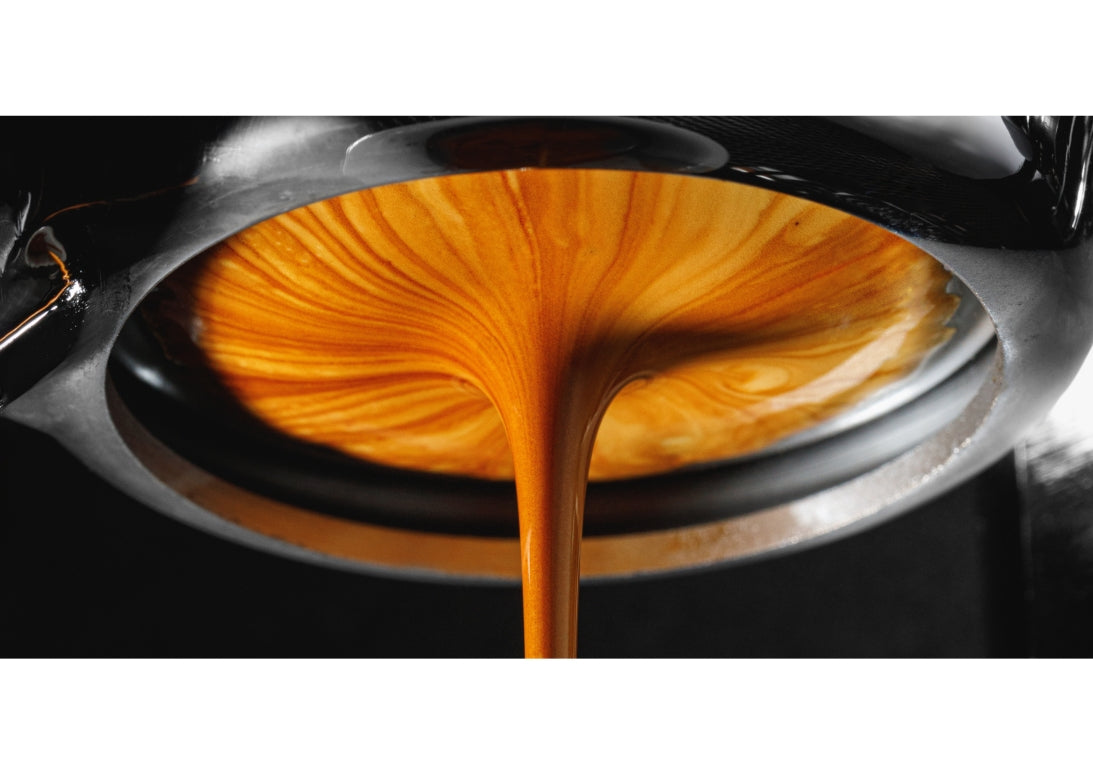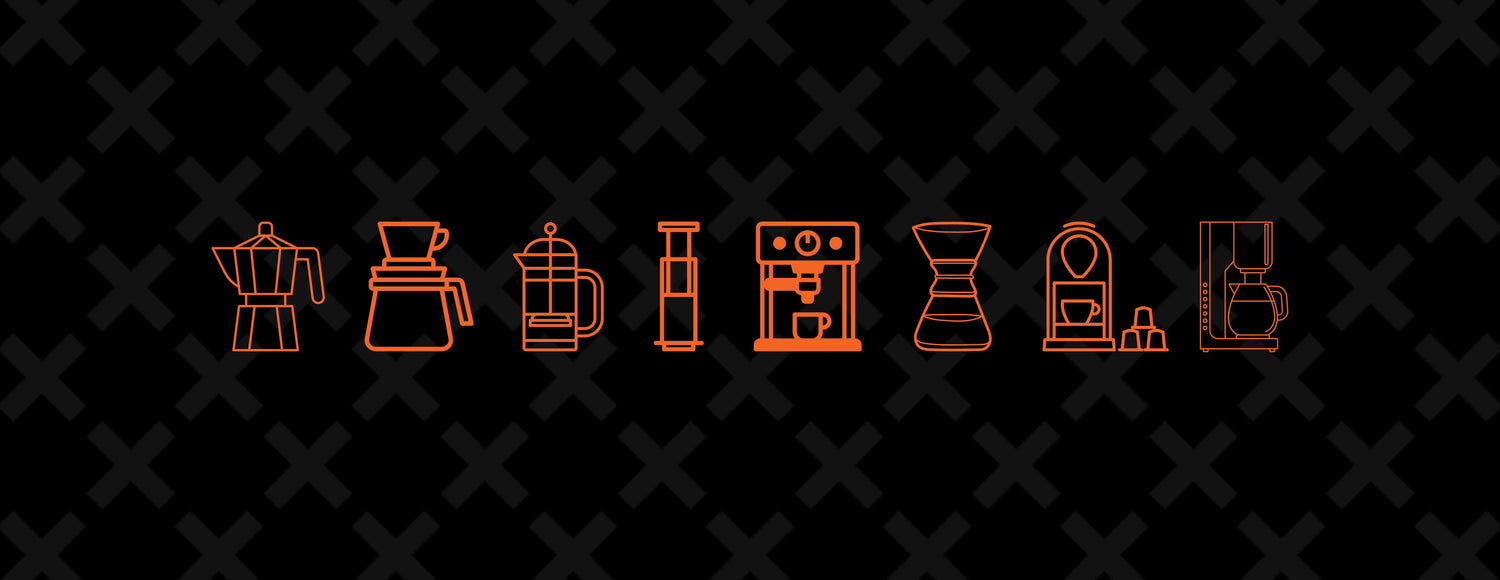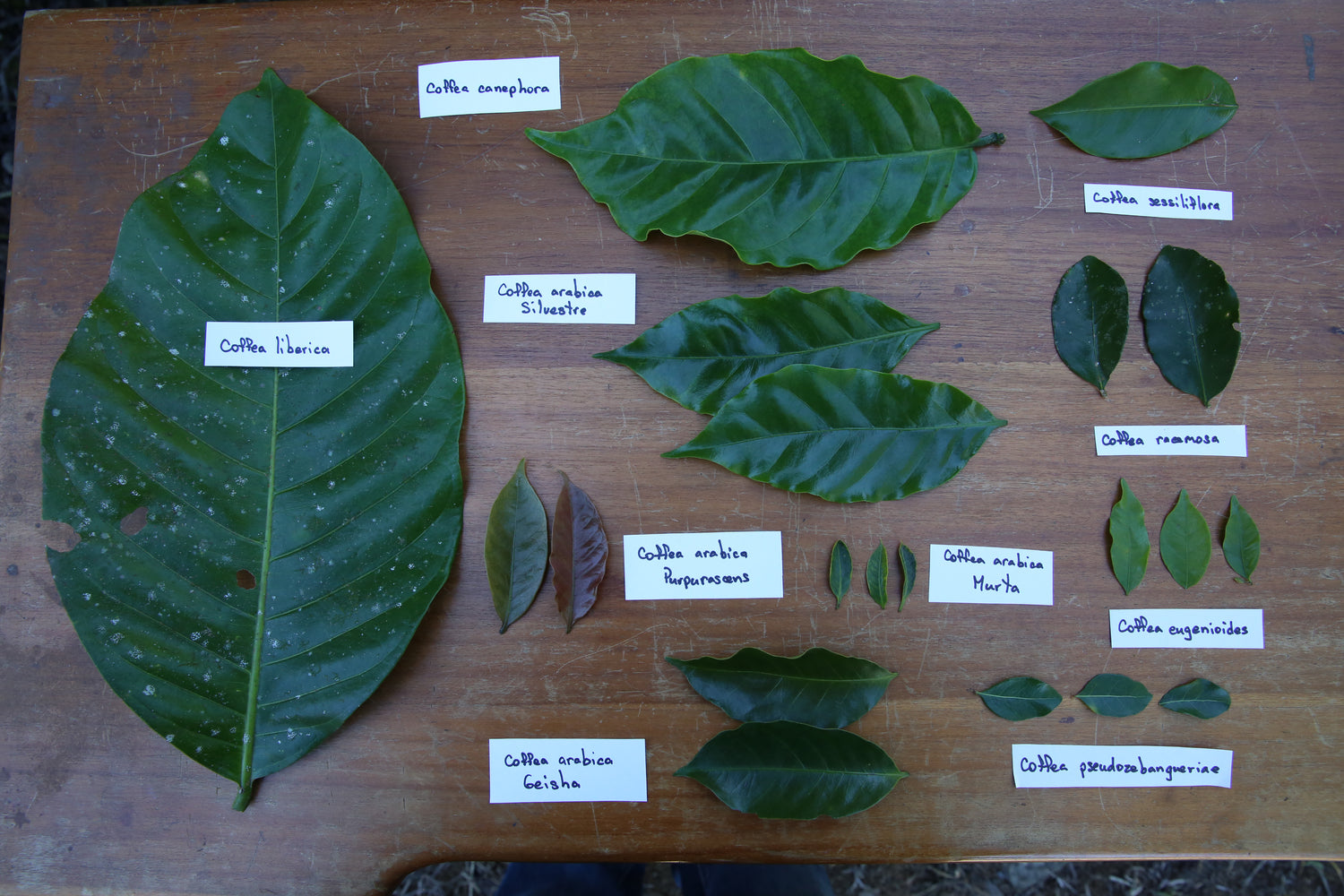Espresso
What is Espresso Coffee?
An Espresso is a concentrated coffee beverage brewed by forcing hot water through finely ground coffee beans. It is known for its intense flavour, rich aroma, and golden crema (a creamy layer on top).
Espresso is the basic building block for many popular coffee drinks, such as Cappuccinos, Lattes, and Americanos. When brewed correctly, it is divine. Incorrectly, and it can be terrible for any number of reasons. And it is not so much the coffee but the barista's skill that will influence this outcome.
Espresso Coffee vs Regular Coffee: What Sets Them Apart?
Espresso coffee and regular coffee (by which I mean filter coffee, french press, and so on) differ in various ways for varying reasons. Here's a breakdown of some of the obvious:
Brewing Method:
- Espresso Coffee: Espresso is brewed using an espresso machine that pressurises hot water and forces it through finely ground coffee beans. The rapid process results in a concentrated coffee shot with a layer of crema on top.
- Regular Coffee: Regular coffee is typically brewed by either immersing the coffee in hot water or pouring the hot water over and through a bed of coffee. The liquid coffee then passes through a filter, usually paper or metal, before serving. These brewing methods are slower but produce a larger volume of coffee.
Flavour Profile:
- Espresso Coffee: Espresso is known for its intense and concentrated flavour. It has a strong, bold taste with a balance of sweetness, acidity, and bitterness. Obviously, though, flavour notes vary depending on the coffee bean variety and roast level.
- Regular Coffee: Regular coffee tends to be milder and less concentrated in flavour. It offers a broader range of nuanced flavour profiles depending on factors like bean origin, roast, and brewing method.
Caffeine Content:
- Espresso Coffee: While Espresso has a higher caffeine concentration per ounce due to its brewing method, a single shot of Espresso contains less caffeine than a standard cup of regular coffee because of its small serving size.
- Regular Coffee: A standard cup of regular coffee contains more caffeine than a single Espresso shot, primarily due to the larger serving size.
Brewing Equipment:
- Espresso Coffee: Espresso requires an Espresso machine to brew correctly due to the need for high pressure during extraction. No matter what the people at AeroPress try to tell you.
- Regular Coffee: Regular coffee can be brewed using various methods, including moka pots, pour-overs, French presses, and more, offering a wide range of brewing options.
Both types of coffee have their own unique characteristics and are enjoyed by coffee enthusiasts worldwide. The choice between them often depends on your personal preferences and the desired coffee experience.
How is the Espresso Shot Prepared?
To make an Espresso requires an Espresso machine. And to operate one of these requires training. But here's a step-by-step guide to how an espresso shot is prepared:
Select and Weigh Coffee Beans:
- Espresso begins with choosing high-quality coffee beans. Any roast level or variety of coffee beans can be used to brew an Espresso. However, medium to darker roasts are easier to do so consistently.
- Whatever type of beans you are using, make sure you follow a recipe. This means weighing your beans/ground coffee precisely. There are no strict rules for making Espresso, but generally, a ratio of coffee to water of 1:2-1:3 will be correct. A double basket portafilter in an Espresso machine can hold 14g-20g of coffee, sometimes even more. It'll depend on your recipe and the machine's capabilities.
Grinding:
- If you've got an Espresso machine, I'll assume you have a grinder too. A fine grind size is crucial for proper extraction. It should be adjusted to match the espresso machine and desired flavour profile.
- Place your freshly ground coffee into the portafilter. If you're not sure, a portafilter is the detachable handle of an Espresso machine.
Tamping:
- Distribute the freshly ground coffee grounds evenly around the portafilter basket, a metal filter basket holding the coffee.
- A tamper is used to compress the coffee grounds firmly and evenly. This step is crucial for uniform water flow through the grounds during brewing.
Insert Portafilter:
- The portafilter is inserted into the espresso machine's group head. The group head is a component that provides pressurised water to the coffee grounds. Press the go button as soon as the portafilter is locked in place. There is a lot of moisture in the grouphead, which will affect the coffee's flavour the longer it is in contact with the coffee before brewing.
Extraction:
- Hot water, heated to a temperature between 90°C to 96°C (195°F to 205°F), is forced through the tamped coffee grounds at high pressure (usually 9 bars of pressure). This pressurised water extracts the flavours, oils, and aromatic compounds from the coffee grounds.
- A good Espresso should begin to flow between 3-4 seconds and finish brewing between 25-30 seconds. But this can vary depending on the dose or recipe being used.
Espresso Shot:
- The result of the extraction is the espresso shot, which can be enjoyed immediately. The Espresso can also be used as the base for various espresso-based drinks, including cappuccinos, lattes, macchiatos, and more.
Espresso machines don't simply work with the touch of a button. They require training in both operation and maintenance. And if you see a bag of FiXX behind a counter, you can rest assured that we have provided both.
How Do Different Espresso Shots Differ in Taste and Preparation?
Ristretto, Lungo, and Doppio are variations of Espresso that differ in their brewing methods, resulting in unique flavours and concentrations. Here's what each term means in coffee terms:
Ristretto
- A Ristretto is a short and highly concentrated espresso shot. Brewing a ristretto involves using the same amount of finely ground coffee beans as a standard espresso but extracting it with less water, typically a 1:1 ratio. And the name itself, Ristretto, literally translates to restricted. The result is a thicker, oozier, more intense drink.
Lungo
- A Lungo is essentially the opposite of a Ristretto. The name means long and is brewed by passing more water through the same amount of coffee (1:3-1:6). The result is a full-flavoured, short coffee less intense than an Espresso.
Doppio
- A Doppio is not a variation in brewing method but a term used to describe a double Espresso. In traditional cafes, single or double Espressos (25ml-50ml) are standard on a menu. Whereas in more modern cafes, a standard Espresso would be a double (50ml).





